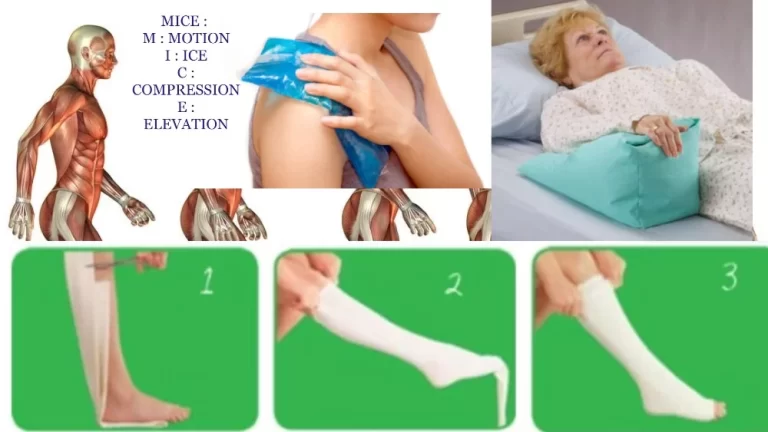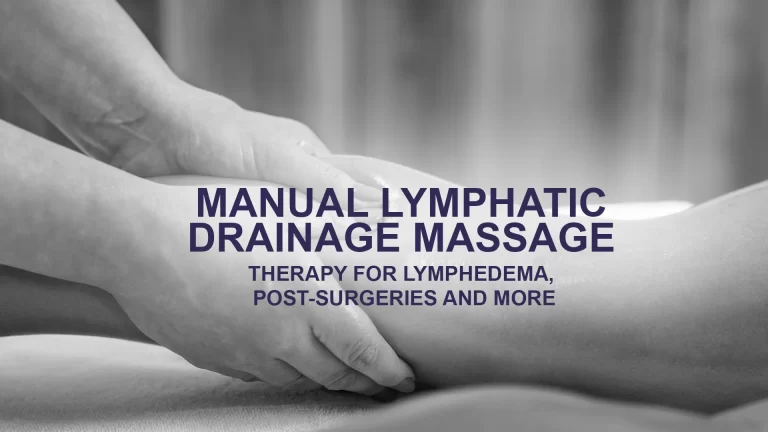What Is Myofascial Release Therapy and Does It Work?
Table of Contents
Description
Myofascial release is a kind of physical therapy frequently used to treat myofascial pain syndrome. Myofascial pain syndrome is a chronic pain disorder caused by sensitivity and tightness in or around the myofascial tissues. These tissues are nearby and support the muscles throughout the body. The pain generally arises from specific points within the myofascial tissues known as “trigger points.”
Myofascial release focuses on reducing pain by relaxing the tension and tightness in the trigger points. It is not normally easy to understand which trigger point is accountable for the pain. Localizing pain to a particular trigger point is very hard. For this reason, myofascial release is frequently utilized over a large area of muscle and tissue rather than in small areas.
What is fascia?
- A person may analyze fascia like a spider web.
- The stringy tissue is densely woven throughout the muscles, bones, nerves, arteries, veins, and organs.
- The fascia is one continuous structure throughout the body.
- Each part of the body is associated with it in some way.
- That is why if there is a snag in the tissue in one part of the body, it may cause pain in another part of the body.
- Usually, the fascia is flexible and stretchy.
- But it is strong. It gives structural support to the body and protects the muscles.
- Fascia is generally able to move without any kind of restrictions.
- When the body feels any kind of trauma, the fascia loses its flexibility.
- It becomes tightened and more rigid.
- The tightness may lead to pain and loss of motion, which may affect the quality of life.
Myofascial release and trigger point therapy
- Myofascial release therapy is also known as myofascial trigger point therapy.
- This is because myofascial pain arises at different trigger points in the body.
- These trigger points are stiff areas in the fascial tissue.
- They experience small bumps, nodules, or knots in the muscles.
- Tightened trigger points may restrict muscle and joint movement.
- People can have pain at the area of a trigger point or widespread pain throughout the entire body.
- Myofascial release therapy mostly focuses on releasing the tension in these trigger points.
Who would benefit from myofascial release therapy?
Myofascial release therapy may help everyone who has tightness in their fascial tissues. Myofascial release therapy can benefit individuals who have experienced:
- Physical trauma: From incidences like falls, car accidents, or whiplash.
- Scarring: From conditions like frozen shoulder, burns, or surgery.
- Inflammation: From conditions like bursitis, osteoarthritis, or plantar fasciitis.
- Compressed nerves: Nerves are mainly compressed due to herniated disks or carpal tunnel syndrome.
- Monotonous stress injuries: From heavy lifting or poor posture.
How Does Myofascial Release Work?
Most myofascial release treatments happen at the time of a massage therapy session. Some chiropractors and traditional medical practitioners may also give it.
- The therapist will slowly massage the myofascia and experience stiff or tightened areas.
- Normal myofascial should experience pliable and elastic.
- The therapist will start massaging and stretching the areas that experience rigidness with light manual pressure.
- The therapist then assisted the tissue and supportive sheath in releasing pressure and tightness.
- The process is done by too many times on the same trigger point and on other trigger points until the therapist feels the tension is fully released.
- These areas where the massage therapist is working can not be near where the pain starts or where a person experiences the pain most prominently.
- Myofascial release works the greater network of muscles that might be causing the pain.
- It tries to decrease tension throughout the body by releasing trigger points across a broad section of the muscular system.
What does myofascial release therapy treat?
Myofascial release therapy can be utilized to treat many different health conditions. These conditions involve:
- Myofascial pain syndrome: Myofascial pain syndrome causes pain in the connective tissues.
- Carpal tunnel syndrome: Carpal tunnel syndrome is a condition that causes pain, numbness, and weakness in the hands and wrists.
- Low back pain: Low back pain is caused by strain on the muscles and tendons in the back. It leads to a reduction in the movement and flexibility of the spine.
- Temporomandibular joint (TMJ) disorder: TMJ happens when the muscles around the joints of the jaw become inflamed.
- Fibromyalgia: Fibromyalgia is a long-term (chronic) disease that causes muscle and joint pain.
- Chronic migraines: Chronic migraines cause often throbbing headaches.
Procedure Details
During the myofascial release therapy sessions, the person will work with a doctor trained in myofascial release therapy. A doctor can be a:
- Physical therapist
- Occupational therapist
- Massage therapist
- Chiropractor
- Sports medicine specialist
- Athletic trainer
- Osteopathic physician
- The sessions will happen in a private room at the therapist’s office.
- The doctor will initially locate the fascial tissues throughout the body that feel stiff and tight.
- These areas are usually known as trigger points or knots.
- Once they find the knots, they will apply slow, gentle, constant pressure to these areas.
- The therapist will use direct contact with the skin.
- They won’t use any oils or lotions.
- They require to be able to feel the tightness in the fascia.
- The pressure will be applied gently in an attempt to lengthen the fascial tissues.
- The doctor will knead and stretch the fascial tissues repeatedly.
- When they experience the pressure and tension release, they will move on.
What happens after myofascial release therapy?
- After the therapist performs myofascial release therapy, a person can experience soreness in the areas they stretched.
- But the soreness should go away fairly fast.
- A person should experience a lot looser in those areas than a person did before.
- For the greatest benefit, a person will require to see the doctor consistently.
- They can suggest treatments every 1 to 3 days.
- Every session will last fifteen to fifty minutes.
- The therapist may suggest returning for sessions for some weeks or a few months.
- It will be based on the cause and severity of the condition.
Benefits of myofascial release
Researchers have not studied the welfare of myofascial release therapy as much as other massage therapy methods. But myofascial release therapy has too many potential benefits. These benefits can involve:
- Reduced pain
- Decreased fascial tension
- Increased range of movement
- Myofascial release helps decrease pain.
- Myofascial pain may be caused by myofascial trigger points.
- Trigger points are hyperirritable points situated in soft tissues.
- Myofascial pain causes discomfort and also affects the range of motion.
- Pain management: Soreness can be decreased and the tissues can start to recover.
- Improved movement: The range of motion in the muscles and joints can increase.
- Increased circulation: The blood and oxygen can move more efficiently throughout the body.
- Relaxation: Massage therapy has been shown to help the body relax and loosen knots.
- Stress management: Tension throughout the body can be released.
Risks or complication
Myofascial release therapy, like other methods of massage therapy, does not have many risks. Infrequently, myofascial release therapy may cause:
- Internal bleeding.
- Trouble moving the muscles.
- Short-term paralysis.
- Nerve damage.
If a person has any of the following conditions, talk to the doctor. They can recommend avoiding myofascial release therapy or trying a different type of therapy.
- Bone fractures.
- Burns.
- Open wounds.
- Deep vein thrombosis.
- Conditions that need blood thinners.
- Metabolic conditions.
Physiological effects of myofascial release
Massage may give many important physiological effects on the body. The physiological effects of myofascial release involve:
Increased tissue elasticity
Increased temperature
- Myofascial release increases tissue elasticity. Fascia tissue is a necessary connective tissue that may become damaged or scarred because of trauma, overuse injury, inflammation, or lack of movement Myofascial release will shorten and tighten because of damage.
- Receiving a myofascial release treatment helps stimulate neural receptors which are situated within skeletal muscle tissue.
- The myofascial release improves the temperature of the fascia and gives pressure to change the fiber length.
- Improved tissue elasticity permits more movement with fascia tissue and prevents the restrictions and adhesions from happening.
- Myofascial release improved blood circulation into the soft tissues.
- An improvement in blood flow permits more nutrients to get into the tissues and waste products to be removed.
- Increased circulation may help fascia adhesions to be alleviated and prevent the fascia system from functioning incorrectly.
- One benefit of myofascial release is reduced tension in the fascia tissue.
- Tension in the tissue becomes a restrictive barrier and may cause tightness and pain.
- Direct myofascial release helps reduce obstructions and adhesions in the myofascial.
- Myofascial release stretches and elongates fascia and helps mobilize adhesive tissue.
- Myofascial release helps improves movement.
- Following injury, fascia tissue and muscles can shorten and start to restrict joint movement and blood flow.
- The techniques utilize in myofascial release break down fascial adhesions and relax muscle tension helping to regain the range of movement around a joint.
Common body parts treated by myofascial release
There are too many common body parts that may be treated with myofascial release. general body parts treated by myofascial release are:
- Upper back
- Lower back
- Buttock
- Thigh
- Myofascial release may also be performed on other areas of the body and be effective to decrease pain and tightness in soft tissues.
Summary
- Myofascial release is a slow sustained pressure that elongates fascial adhesions so that tissue may return to perfect realignment.
- Myofascial release helps decrease acute pain, treat injuries, and to promote relaxation.
- There are many benefits of myofascial release incorporating reduced pain, reduced fascia tension, and increased movement around a joint.
FAQ
Trigger Points in Myofascial Pain Syndrome (MPS)
The trigger point may trap or irritate nearby nerves and cause referred pain, which is felt in another part of the body. Scar tissue, reduced of range of motion, and weakness can also develop over time.
In myofascial pain syndrome, trigger points radiate pain to some other muscles. This pain tends to happen when trigger points are under pressure, but it may occur spontaneously. There is no cure for the chronic condition, but it is possible to manage it with treatments.
Go to the Mediterranean (diet).
Change to an anti-inflammatory diet, such as the Mediterranean diet (lots of fruits, vegetables, whole grains, and fish). This approach to eating improves antioxidants and reduces the unhealthy carbohydrates that promote inflammation.
Stress and anxiety are usual causes of myofascial pain syndrome. This is likely because of the fact that stress may cause a person to clench and unclench their muscles repeatedly, causing strain because of the repeated muscle tension as a result of the stress.
Frequently this is a hugely relaxing and enjoyable treatment that is non-invasive with minimal pain or discomfort. I would be remiss to not let the person know, though, that other times there may be a rather intense discomfort as ribs, joints, and other things begin to move in ways they have not been able to for too long.







